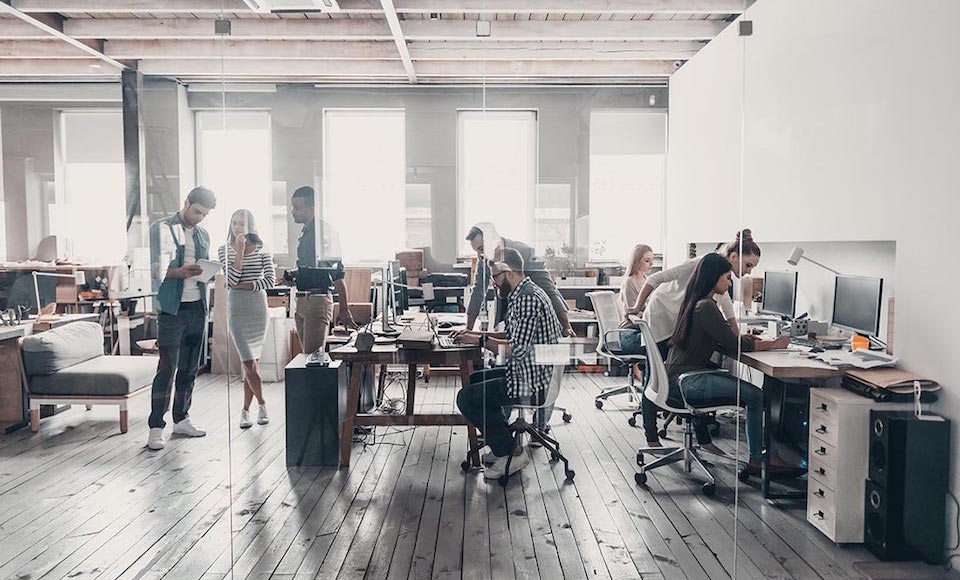 A new study from Oxford Economics confirms what many already know: open offices lower both employee output and employee morale.
A new study from Oxford Economics confirms what many already know: open offices lower both employee output and employee morale.
Working in an eccentric tech startup sounds like a dream. A fridge is stocked with free snacks. A rock wall ensures you stay in shape. A company-wide kickball game rages every Thursday. There’s a designated nap room for when your brain needs a break. You’ve been to summer camps that were less fun than coming into the office.
The problem is, in addition to all those quirky perks, that uber-trendy company has probably also embraced the open-place office, a structure that scientific studies have repeatedly slammed. The recent Oxford Economics study surveyed more than 600 executives and 600 employees to better understand what works (and what doesn’t) about open-plan layouts. The results show that threats to productivity and worker peace of mind are bigger issues than most executives realise.
Researchers found that employees value being able to focus without distractions more than anything else in their work environment, but frequently find it difficult with the noise and distractions endemic to open offices.
“Ambient noise and lack of personal space can make it hard for employees to concentrate and get things done,” says Jeff Lowe, vice president of marketing at Smart Technologies, the Canada-based developer of interactive learning tools and software. As workplace privacy dwindles, people have fewer places to escape the sounds of their coworkers’ chatter, sneezes, and phone calls.
The study also exposed a disconnect between executives and non-executive employees. While 53% of employees reported feeling less satisfied and less productive when they had to work through ambient noise, just 35% of executives felt the same way. Additionally, only 41% of employees said they have the necessary tools to filter out distractions, while 63% of executives felt that their employees had everything they needed.
The discrepancies aren’t surprising when you consider the difference in physical workspaces. Sixty-two percent of top-level workers score coveted private offices. That same privilege is granted to a scant 14% of employees. It’s no wonder executives don’t consider minimising distractions an office priority – they rarely experience them.
Forbes calls it a case of cutting off your nose to spite your face. “The results show that threats to productivity and worker peace of mind are bigger issues than most executives realize, and most do not have the technology or strategies in place to deal with the problems,” reports the magazine. “But if productivity suffers—which it clearly does—then companies are actually losing money because employees aren’t able to perform and produce as efficiently as they could without distractions.”
Employees are increasingly turning to telecommuting to combat the distractions. According to a recent report, 80-90% of the total US workforce prefers to telework at least part of the time. According to another, 95% of employees say that the ability to telework affects their decision to stay with a company.
Science has a lot to say about how to be happier and more efficient at work. Continue the reality check with a research-backed take on the working hours that won’t harm your health.